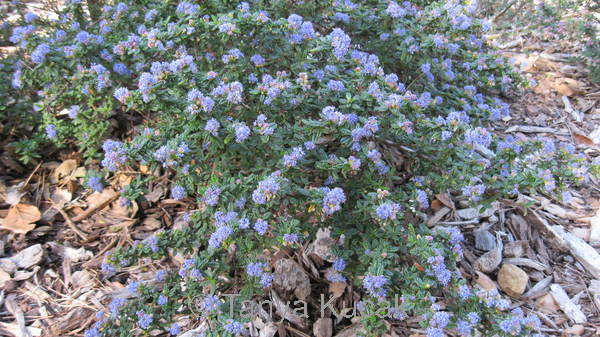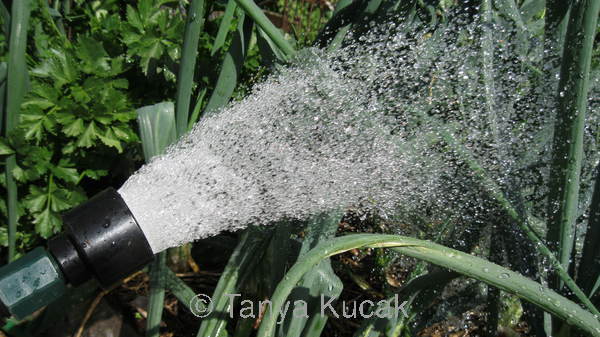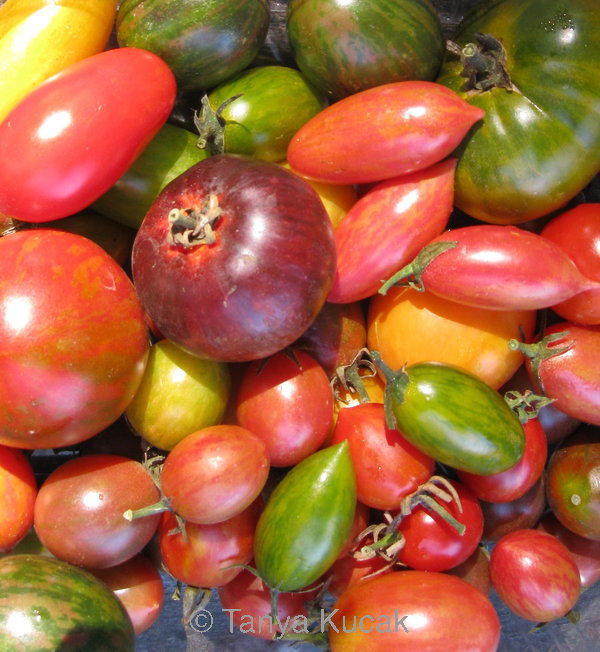
Think about where you want to spend your water budget this year. In the garden, natives, edibles, and herbs offer the best return on investment.
Edibles are always a good investment, especially this year when farmers will be growing less, letting fields lie fallow because water is not available. it's likely produce prices will increase sharply this summer, and it will be more cost-effective to grow your own, provided you plant the appropriate varieties and amounts so that your harvest does not go to waste. With a productive garden, you won't skimp on eating the 5 to 9 daily servings of fruits and vegetables needed for optimal health.
For container gardening, an EarthBox or a do-it-yourself equivalent is a great way to save water and have a productive crop.
A drought-tolerant garden is another good investment. Depending on the weather, an established native garden will need no water or infrequent deep watering. Natives that were planted in the past year or two may still need some water to become established, and the relatively small amount of water they get this summer will pay off for many years.
Here are some low-cost and no-cost approaches to having a garden and saving water.
The first step is to stop wasting water. The EPA's Fix a Leak Week web page (http://tinyurl.com/6pubdq7) offers statistics on the amount of water wasted, as well as helpful guidance for finding and fixing leaks.
Runoff is another obvious waste of water. Whether you water by hand, with sprinklers, or with a drip system, all the water should be getting absorbed into the soil. If it's not, water slower and longer. Cycle an automatic system on and off, with fewer minutes per cycle, until runoff is eliminated. For manual watering, use a good water breaker (Dramm is the best) and water at soil level.
Reduce losses from evaporation by watering early or late in the day, and adding mulch. You can get a free truckload of mulch from tree trimmers. Add 3-4 inches of mulch to established trees and shrubs. If weeds are a problem, lay down a couple layers of cardboard or 3-5 sheet thicknesses of newspaper first. Adding mulch keeps your soil alive and your plants healthy. The only exception is plants native to dry rocky hillsides, which may do better with a thin layer of mineral mulch.
Even in our dry-summer climate, well-mulched tomato plants don't need water after July 4. The tomatoes don't get as large, but the flavor is intensified. Mediterranean herbs such as oregano and thyme are drought tolerant, and herbs in general are easy to grow and a delight to have on hand when all you need is a snippet.
Adding compost to your vegetable beds (or your lawn!) will increase the water-holding capacity of the soil. You can get free compost from the Sunnyvale SMART Station or from horse stables such as Portola Pastures.

Drought-tolerant groundcovers such as ceanothus will need little or no summer water once established. Established trees and shrubs can take up to 4 inches of mulch, and unplanted areas can handle a lot more. Pull the mulch a few inches away from stems and trunks so they won't rot.

Do use a Dramm water breaker with a gentle flow. Don't water too high like this, losing water to evaporation. Instead, direct the flow of water downward and water near the roots of plants. Protect tomatoes, squash, and cucumbers from waterborne diseases by keeping the leaves dry.

Well-mulched tomatoes, winter squash, and dry beans don't need water once they've set fruit, even in our summer-dry climate. With minimal mulch, watering is needed at most every 5 days. Grow your own and experiment with interesting varieties! Donate extras to food banks.
© 2014 Tanya Kucak